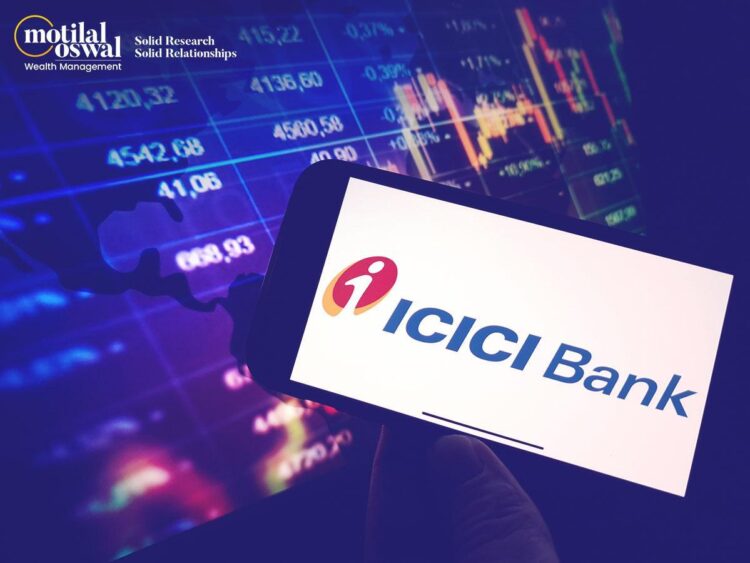Investors in India’s busy financial sector have been closely following the ICICI Bank Share Price, mainly because it responds to the RBI’s repo rate changes. Since ICICI Bank is recognised as a leading private sector bank in India, stock values reflect changes in interest rates, the bank’s liquidity and the nation’s economic growth.
ICICI Bank’s Share Price and investors’ moods have shifted in 2025 due to the large impact of changes to RBI repo rates on the banking industry. The blog focuses on the behaviour of ICICI Bank’s Share Price and RBI repo rate changes in India’s financial sector.
Recent RBI Repo Rate Decisions
Between February and April 2025, the RBI cut the repo rate twice and reduced it to 6%. In February 2025, the Federal Reserve cut the rate by 25 BPS, taking it down to 7.75% and in April, they cut it another 25 BPS to 6%.
Apart from the policy change, the RBI now wants to help the economy grow when trade threats and slowdowns are causing concern. With its conservative approach, the RBI has predicted that inflation will reach 4% and GDP growth will be 6.5% in 2025-26.
Effect on Banks
For banks such as ICICI, a decrease in the repo rate lowers the cost of borrowing, possibly increasing lending and profitability, but also narrowing net interest margins (NIMs) because of decreased loan interest rates. This factor affects the ICICI Bank Share Price directly, as investors consider the balance between growth prospects and margin squeezes.
ICICI Bank’s Financial Performance
In recent years, the bank has emphasised digital solutions that meet customers’ needs and careful risk control. Studying a bank’s financial results reveals how effective they are, how much they earn and how well they are doing economically.
Loan and Deposit Growth
Retail loans, which constituted 52.4% of the portfolio, grew by 8.9% compared to last year, while deposits increased by 14%. With improvements in asset quality, the bank’s GNPA came down to 1.67% and NPA to 0.39%. They help show that ICICI Bank is highly reliable in managing risks, which makes it preferred by investors interested in ICICI Bank’s shares.
Market Response
ICICI Bank’s Share Price has reacted to the repo rate cuts the RBI made in 2025. Banks can lower the expense of borrowing funds and, consequently, offer better loan rates to their clients. As a result, there may be higher demand for vehicle, personal and home loans.
After the repo rate was cut in April 2025, ICICI Bank Share Price dropped the interest on savings accounts by a quarter, with savings below ₹50 lakh earning 2.75% (previously 3%) and those over ₹50 lakh gaining 3.25% per annum (previously 3.5%). This follows others, such as HDFC Bank and Axis Bank, in doing so.
Short-Term Volatility
ICICI Bank’s share Price experienced short-term volatility from such rate reductions. On April 9, 2025, the stock declined 0.71% to ₹1,290.55, showing concerns from the market regarding margin compression.
ICICI Bank analysts have pointed out that additional repo rate cuts will put pressure on NIMs since decreasing lending rates have the potential to outstrip decreases in deposit rates. The bank’s robust fundamentals, such as a 16.03% capital adequacy ratio and low cost of credit, have supported this.
Economic Implications of Repo Rate Cuts
Interpreting how these rate cuts will shape the economy can help us understand how they may affect growth, investment and public consumption.
Increasing Loan Demand
RBI repo rate reductions are intended to stimulate economic growth through cheaper borrowing. For ICICI Bank, this means more loan demand, especially in retail and MSME segments, which grew at 8.9% and much, respectively, in Q4 FY25. Cheaper EMIs on home loans and personal loans are likely to fuel credit growth, which could help the bank’s long-term profitability.
Deposit Rate Challenges
The repo rate cut also affects deposit rates, which would put the test on the ability of banks to obtain low-cost funds. ICICI Bank CASA ratio was at 39.4% in Q4 FY24, which points towards a solid deposit base but possible exposure to rate-sensitive depositors moving towards higher-yielding options. The accommodative policy by the RBI is likely to enhance the attitude in the market, with rate-sensitive industries such as banking, real estate, and consumer durables gaining.
Future Outlook
Analysts expect that repo rate cuts can result in a 50 bps cut in the coming months, further supporting loan growth but potentially constricting NIMs. For ICICI Bank Share Price, this places a fine balance between the growth prospects and profitability concerns for the investors, who need to watch the bank’s performance to determine whether it can effectively manage margins.
Performance Metrics
Sanford C. Bernstein analysts pointed out ICICI Bank’s return on assets (RoA) rising above 2.5% in Q4 FY25, led by NIM and low credit cost. Lower loan and deposit growth when compared to the last quarter, though, has caused cautious optimism with some warning of high market expectations. It’s six months of 1.3978 signifies greater volatility relative to the large-cap market, indicating its responsiveness to macroeconomic changes such as repo rate movements.
Conclusion
The interplay between ICICI Bank Share Price and RBI’s repo rate decisions underscores the intricate relationship between monetary policy and stock market dynamics. The RBI’s 2025 rate cuts to 6% have created opportunities for ICICI Bank to expand lending, particularly in retail and MSME segments, while posing challenges to NIMs.
FAQs
1. To what extent is the RBI repo rate related to ICICI Bank’s share price?
The amount ICICI Bank pays for borrowed money is linked to the RBI repo rate. When the repo rate declines, banks usually cut their lending rates, helping them give more loans. Yet, the lower profit margins may pull down the bank’s share value.
2. What was the reason behind ICICI Bank’s cut in the interest rates of savings accounts in 2025?
The ICICI Bank reduced interest rates on savings accounts after the RBI cut the repo rate in the same year. Thanks to this, the bank is able to save, but the income of depositors, especially those who focus on interest, actually decreases.
3. In 2025, what will show the financial health of ICICI Bank?
Some important signs of ICICI Bank’s health are a capital adequacy ratio of 16.03%, a gross NPA of 1.67% and a net NPA of 0.39%. These numbers indicate that the bank is handling its assets and risks carefully.
4. Will further repo rate cuts benefit ICICI Bank in the long term?
More cuts to the repo rate may increase loan demand and help long-term growth, especially for retail and small businesses. But if rates keep dropping, the bank’s profit margins might shrink, affecting short-term profits. How well the bank manages the situation will decide if it benefits in the long run.




